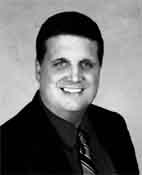 | Dr.Glenn Fortmayer is Superintendent of USD 247 Southeast. He has been a superintendent for four years and administrator for 15 of 23 years in education. He is working with Southeast on initiatives including: expanding student learning opportunities, technology integration, and increasing instruction that authentically engages students every class period of every day with an emphasis on project based learning. For more information call 620-457-8350.
|
Education Issues
2013-01-02 14:34:10
School bus efficiency
A-Today’s finance conditions require superintendents to focus on busing efficiency. Dollars saved are compared to the effect on students. Parents desire for children to be safe. They want children to be able to get to school when they can’t take them themselves. They don’t want children on a bus for extremely long times or walking distances in adverse weather or along dangerous roads. Parental desires match superintendents.
Many taxpayers want efficiency. Every seat filled, only busing students not within walking distance, and using efficient vehicles. Superintendents attempt to schedule buses accordingly so savings can be used for other student needs.
Buses leave a motor pool or driver’s home if closer to the start point, whichever saves fuel, time, and wear. Buses are empty or nearly, whenever they start and after they unload. Students are not distributed evenly so a small number of students ride most of the route and the remainder load later. It doesn’t save to pay for the route to be divided and operate two vehicles, two drivers. Buses carrying pre-k students might look empty, but just below the windows are little treasures!
Sometimes, more than one bus has to cover an area. This is usually simply because there are too many students for one bus. It can occur if students are spread out in far distances or on roads that don’t allow buses to move quickly. USD 247 Southeast drivers transport students over 326 square miles. We have to use multiple buses in areas, which results in some being partially full in order to keep students from riding an excessive time, not getting on tremendously early in the morning, or getting home too late. We aim for forty-five minutes to one hour as a maximum route time. Like most districts, financial restraints keep us from operating more buses to shorten that time.
In town, several buses pass down the same streets as they near the school. The buses are near the end of their routes and they are nearly full. As one bus fills to capacity, another is forced to stop to pick up remaining students. We pick up students within five blocks of the school if they are very young, or have to cross dangerous streets, railways, or highways. We use zone bus stops in town versus stopping door to door to save time and money.
School districts have to have a bus that can carry every possible student on a route. Students may not ride for reasons such as illness, friends driving them, and staying for clubs or athletics. Should many not ride; the bus could almost be empty. If the next day they all ride, the bus will be packed.
Interested students, parents, and patrons should contact their local districts for more information.


